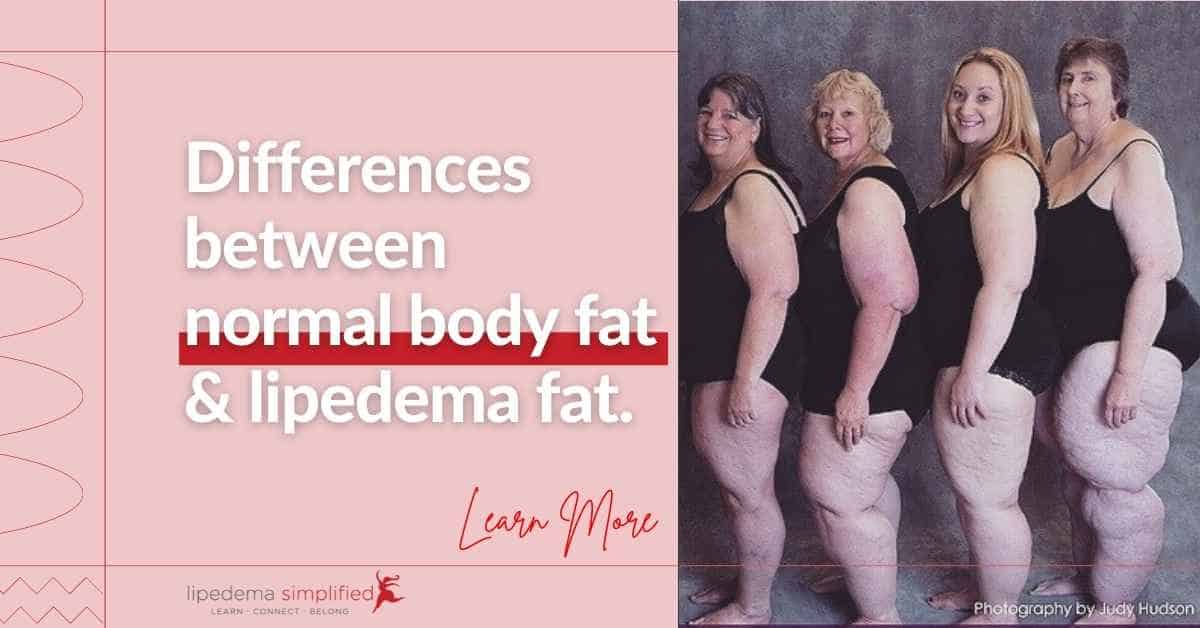
Welcome back to Living Well with Lipedema! In this post, I want to continue building a foundation of knowledge about lipedema. I’m going to talk about the differences between normal body fat and lipedema fat. Although there are similarities between them, we’ll see that there are also major differences that make lipedema fat unique. Learning about these differences will allow us to better understand, treat, and (hopefully) prevent lipedema.
I’m going to focus on a research paper that was published in the Obesity Journal in 2019. The researchers were led by Sara Al-Ghadban at the University of Arizona. The title of the paper was “Dilated Blood and Lymphatic Microvessels, Angiogenesis, Increased Macrophages, and Adipocyte Hypertrophy in Lipedema Thigh Skin and Fat Tissue.” Phew, that was a long title! Basically, the title is saying that the researchers were interested in finding out what is different about lipedema fat.
How was the study conducted?
The participants in this study were 49 women. 30 of the women had lipedema, while the other 19 women did not have lipedema and served as a control group. The participants were also divided into groups depending on whether they had obesity. The researchers took samples from the skin and tissue from the thigh from all participants, then analyzed and compared those samples.
What did the researchers find?
The researchers analyzed the participants’ samples to look for similarities and differences between lipedema fat and normal obesity fat. In terms of similarities, the fat cells in lipedema were a similar size to the fat cells found in obesity. There were also no differences between lipedema and obese fat in key immune cells, such as t-lymphocytes and mast cells.
However, there was a significant increase in macrophages in lipedema fat, regardless of whether the participant with lipedema was also obese. Macrophages are cells that destroy bacteria and other toxins. They are also involved in activating inflammation. In addition, women with lipedema had more blood vessels in their skin than women with lipedema. The blood vessels in the participants with lipedema were also larger.
What are the key lessons for us?
Based on this study, we can take away a few important points about lipedema:
- The women with lipedema have an increased flow of fluid into their thighs without the ability to remove it
- Having too much fluid in the thigh may stimulate fat to grow
- The growth of this fat in the thigh causes inflammation, which stimulates the hardening of the thigh tissue (called fibrosis) and difficulty in weight loss.
- Inflammation and the inability to move fluid in lipedema fat may activate nerve fibers that cause pain
- Lipedema fat and obese fat share some similarities, such as enlarged fat cells and a higher number of cells that activate inflammation (macrophages)
From this small sample size, we can begin to see that, although there are some similarities between obese fat and lipedema fat, there may be some significant differences that make lipedema fat unique. As I go into more depth about different aspects of lipedema in future blog posts, it will be useful to keep these takeaways in mind.
If you would like to read the original article, you can download it here: https://downloads.hindawi.com/journals/jobe/2019/8747461.pdf. As always, I’ve included resources below if you would like to learn more about lipedema and the work that we do at Lipedema Simplified and The Lipedema Project.
~ Leslyn Keith, OTD, CLT-LANA
Board President, Director of Research | The Lipedema Project
LEARN MORE
FREE Documentary – The Disease They Call FAT available on Facebook & available on Amazon
The Lipedema Project https://lipedemaproject.org/
Lipedema Simplified https://lipedema-simplified.org/
Facebook groups:
- Keto Lifestyle for Lipedema https://www.facebook.com/groups/LipedemaKetoWOE
- Lipedema/Lipoedema Simplified Support https://www.facebook.com/groups/LipedemaSupport/
Article on DietDoctor https://www.dietdoctor.com/can-a-ketogenic-diet-help-lipedema
Link to our paper published in Medical Hypothesis https://www.sciencedirect.com/science/article/pii/S0306987720333260
